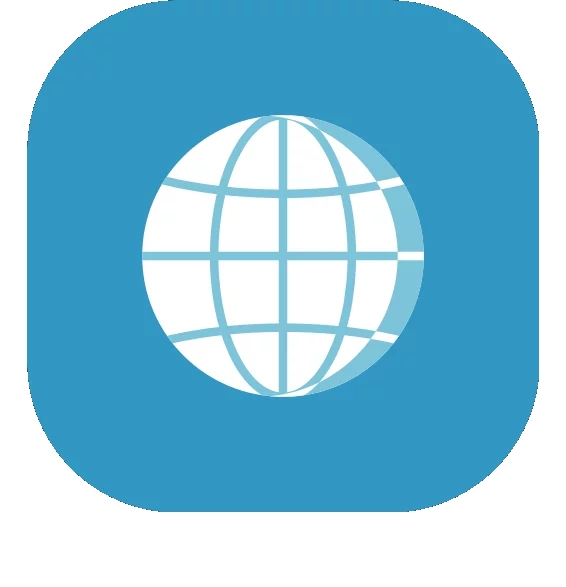Multilingual Link Building: Boost SEO Across Global Markets
Are you struggling to improve your brand’s visibility across different language markets? This article will explore effective strategies for multilingual link building, a critical component that organizations […]
Are you struggling to improve your brand’s visibility across different language markets? This article will explore effective strategies for multilingual link building, a critical component that organizations often overlook. You’ll get insights on identifying target markets, developing a content strategy that resonates in different languages, and how to use local platforms to expand your reach.
As a bonus, we’ll address a common challenge: how to ensure that link-building efforts on multilingual sites align with technical SEO practices. These methods will help you improve your position in international markets, connect more effectively with diverse audiences, and pave the way for increased traffic and engagement.
Key Takeaways
- Multilingual link building boosts global SEO and connects with a wider audience
- Localized backlinks and keywords increase search engine visibility in specific regions
- Collaboration with native speakers can improve content authenticity and engagement
- Analyzing competitors’ link profiles helps finetune link-building strategies
- Technical SEO, like hreflang tags and site speed, is crucial for user experience
The Importance of Multilingual Link Building
When it comes to global digital marketing, multilingual link building is a priority for any business wanting to secure a strong online presence. By building localized backlinks, a company can boost its search engine rankings across diverse regions. This approach helps overcome language barriers during link acquisition and connect with a broader target audience on the internet.
What’s more, establishing these links is a big step toward earning the trust of international customers and strengthening their confidence in your brand.
In the upcoming sections, we’ll discuss enhancing global SEO with localized backlinks, overcoming language hurdles in link building, and building credibility with global audiences.
Enhance Global SEO With Localized Backlinks
Securing localized backlinks as part of your multilingual strategy will improve your search engine optimization across markets. By integrating region-specific backlinks, you can climb the search engine ranks so that potential customers can find you when they search in different languages.
With these backlinks in place, resources like Google Analytics can be used to monitor their strategic impact. Based on the data, you can refine your strategies to further improve global visibility and boost your authority online.
Overcome Language Barriers in Link Acquisition
Overcoming language barriers during link acquisition is key to effectively engaging with your target market in different regions. You can skillfully navigate language challenges by using clear, culturally relevant communication and incorporating robust translation tools as part of your digital marketing strategy. This includes crafting persuasive outreach messages that resonate with local webmasters to acquire backlinks that signal relevancy to search engines and contribute to URL authority within specific markets.
A seamless technical process is also essential when integrating multilingual links into a website:
- Ensure accurate translation and localization of link anchor text to maintain context and relevance.
- Adopt hreflang annotations to direct users to the correct language version of a URL.
- Collaborate with native speakers for content creation and link prospecting to authentically connect with the audience.
Earn Trust With Global Audiences
Building trust with international audiences starts with meticulous research and close attention to user experience. Avoiding pitfalls like duplicate content will maintain your brand’s credibility.
A well-devised multilingual link-building strategy, whether in the English language or other target languages, will provide a seamless experience. It shows respect for users of different cultures and signals authenticity. By prioritizing clarity and inclusivity, you can create connections that strengthen your brand’s reputation across diverse audiences.
Identifying Target Markets for International Outreach
The following steps are critical in creating a multilingual link-building strategy that successfully engages diverse audiences.
Research High-Potential Regions and Languages
The first step in identifying target markets for international outreach is conducting thorough research, including keyword research, into the high-potential regions and languages.
Focusing on this aspect allows you to tailor your content for relevance to achieve a lower bounce rate and stronger domain authority. Tools like SEMrush provide invaluable insights, allowing you to fine-tune your strategies and connect with the right audience effectively.
|
Region |
Preferred Language |
Search Volume |
Bounce Rate |
Domain Authority |
|
Latin America |
Spanish |
High |
Low |
Medium |
|
Europe |
French |
Medium |
Medium |
High |
|
Asia |
Mandarin |
High |
High |
Low |
As you focus on geotargeting, a good example to observe is the United Kingdom, where hreflang tags ensure that content resonates across different cultures.
Analyze Local Competitors and Their Link Profiles
A good, strategic way to assess and build credibility is to analyze the link profiles of local competitors in your target markets. Examine the anchor texts and backlink strategies that competitors use, especially in markets with a high concentration of Spanish-language searches, and you’ll glean valuable data on effective phrases and SEO tactics.
This insight helps shape a more competitive link-building approach, ensuring that your brand’s international SEO efforts are as effective and authoritative as your local counterparts.
Consider Cultural Nuances in Communication
Your multilingual link building strategy must cater to cultural nuances in communication, as being sensitive to these subtleties can significantly enhance customer engagement in certain markets. For instance, in markets like Italy and Germany, understanding and leveraging local cultural references can improve the efficiency of the tags used in this content, as they better align with the preferences of local search engine algorithms and the expectations of local users.
As your brand demonstrates respect for cultural differences, you show that you value your international customers, which can lead to stronger relationships and improved customer loyalty.
|
Country |
Communication Nuance |
Impact on SEO Tag Strategy |
Customer Engagement |
|
Italy |
High Context |
Localized Tags |
Increased Loyalty |
|
Germany |
Direct Communication |
Precise Keywords |
Enhanced Trust |
Develop a Multilingual Content Strategy
For successful multilingual link building, focus on developing a content strategy that produces content that truly resonates with each audience in their own language. Creating valuable content, localizing keywords using tools like Google Trends, and adapting SEO practices ensure that search results within local markets, such as France, favor your website.
Collaborating with native speakers adds authenticity by reflecting cultural traditions and preferences. Smart strategies, such as using nofollow attributes where needed and leveraging professional link-building services, can amplify your global reach.
Create Tailored Content for Each Language
Multilingual link building campaigns thrive when the content aligns with each audience’s unique cultural and linguistic nuances. Don’t just translate existing content; instead, create tailored content that meets cultural and contextual expectations and feels natural and relevant to your audience.
A skilled link building agency that creates valuable, SEO-optimized content stands a greater chance of building links that enhance international SEO and contribute meaningfully to the overall growth of your global brand’s online presence.
Localize Keywords and SEO Practices
Localizing keywords and tailoring SEO practices is a game-changer for any successful multilingual SEO link building strategy. When a link building service innovates its campaign to include keywords tailored to the specific cultural and linguistic needs of each target market, the potential for engagement and conversion rises dramatically. This approach increases content relevance while demonstrating to search engines that your website is a valuable resource for users in different regions, thereby boosting its global profile.
Ensuring the effectiveness of localized keywords and SEO practices requires meticulous planning and execution:
- Research and choose keywords that reflect regional search habits and language.
- Adjust SEO tactics to align with the preferences of local search engines and user behavior.
- Continuously monitor and optimize your strategy to keep improving results.
Collaborate With Native Speakers for Authenticity
Partnering with native speakers for content management and translation ensures your multilingual content feels authentic, a quality needed for successful multilingual link building. Their expertise captures cultural and linguistic nuances and enhances web analytics data so that social media marketing efforts resonate with local audiences, especially in diverse markets like Latin America and Francophone regions.
This collaboration produces more effective communication and a deeper connection with the Spanish or French language community. By demonstrating the brand’s commitment to understanding and serving its customers, you build trust and loyalty. Here’s why working with native speakers matters:
- When native speakers are responsible for the management of language-specific content, the brand message is enriched for different markets.
- Their insights enhance web analytics by interpreting local user behavior more accurately.
- They help tailor social media marketing strategies to increase engagement and build trust with local audiences.
Using Local Directories and Platforms
In the content marketing arena, listing a site on reputable local directories, engaging with regional forums and community sites, and leveraging country-specific social media platforms are crucial tactics in multilingual link building.
These strategies put you in a position to amplify your brand’s presence in international markets such as Spain. Let’s explore how these avenues help to strategically align social media and directory listings to enhance global visibility and engagement.
List Your Site on Reputable Local Directories
Businesses looking to penetrate the German market with robust search engine marketing should list their websites on reputable German-language directories to strengthen their lead generation and outreach efforts. These local directories are frequented by users in the United States and elsewhere who are searching for reliable services and products, so they present a prime opportunity for companies to increase their visibility.
According to link building experts, a presence in these directories boosts referral traffic and search engine rankings due to the relevance and authority of local platforms.
Steps to maximize the impact of local directories include:
- Choosing directories with high domain authority that are well-regarded in the target market.
- Providing comprehensive and accurate business information to foster trust and facilitate contact.
- Incorporating keywords relevant to the local audience for enhanced search engine marketing performance.
Engage With Regional Forums and Community Sites
Engaging with regional forums and community sites helps elevate brand awareness and establish a positive reputation within target markets. For this strategy to be effective, you’ll need to actively participate actively in discussions relevant to your brand’s niche. Any insights and assistance you provide can include organic mentions and links back to your company’s website.
These interactions can also provide insight into customer behavior and preferences, which can guide subsequent email marketing and promotional efforts and ultimately increase visibility in Google search results.
Leverage Country-Specific Social Media Platforms
Country-specific social media platforms are a powerful way to supercharge your multilingual link building efforts. By tailoring your copywriting to resonate with local audiences, you can strengthen your brand presence and encourage high-quality HTTP links with targeted anchor texts.
This approach aligns with broader digital marketing goals, helping you connect with regional markets and drive meaningful engagement. Here’s how to make it work:
- Use geo-targeted copywriting to create content that speaks directly to local communities and encourages shares and links.
- Embed http links that lead to localized landing pages for a seamless user experience and stronger SEO.
- Collaborate with influencers on country-specific platforms to diversify anchor texts and expand your reach.
Build Relationships With International Influencer Marketing
Partnerships with key influencers in target markets is a powerful tool for multilingual link building. Markets like Argentina illustrate the importance of understanding local culture in crafting a content strategy that drives return on investment.
The upcoming sections provide insights into identifying these influencers, exploring collaboration opportunities, and fostering lasting relationships for continued benefits. These are all integral components of a holistic approach to global digital marketing success.
Identify Key Influencers in Target Markets
To gain traction, you’ll need to partner with individuals who not only have a substantial following but also show cultural sensitivity and content creation savvy. These kinds of collaborations ensure that messaging resonates authentically with diverse demographics and lays the groundwork for meaningful engagement and stronger link-building opportunities.
Offer Collaboration Opportunities and Partnerships
By engaging with influencers who have a deep understanding of local culture, businesses can create content that resonates with international audiences. This leads to more authentic and impactful link creation. Such strategic alliances drive quality referral traffic and raise brand visibility and recognition across various languages and regions.
Foster Long-Term Relationships for Ongoing Benefit
Long-lasting relationships with international influencers are essential for the sustained growth and success of a multilingual link-building strategy. These strategic partnerships, characterized by mutual respect and ongoing communication, can lead to a continuous exchange of high-quality links, boosting brand visibility and authority.
Sustained collaborations can often result in more profound, culturally rich content that captures the essence of local communities, building trust and loyalty from your global customers.
Multilingual Guest Posting
Implementing multilingual guest posting is a strategic extension of link building that requires sourcing high-authority blogs in a variety of languages. You’ll need to pitch relevant topics to editors across different regions skillfully and ensure that the content is adapted to captivate and engage the local audience. This method has a direct effect on a website’s authority and relevance within international search engines and sets the stage for increased global visibility and audience engagement.
Find High-Authority Blogs in Different Languages
This is a decisive move for enhancing the multilingual footprint of any website. You’ll need to scour the internet to identify platforms that command a large, engaged readership and exhibit strong domain authority. Experts use advanced search queries and SEO tools to find these digital hubs. Guest posts on these high-value blogs will improve your brand’s visibility and build trust among global audiences.
Pitch Relevant Topics to Foreign Editors
Topics that you pitch to editors must not only be relevant but also captivating. It’s paramount that these pitches reflect a nuanced understanding of the target market’s interests, addressing current trends and challenges that local readers face.
A well-researched pitch that aligns with the blog’s themes and reader expectations can lead to guest posts that enrich the site’s content, enhance the link profile, and provide valuable SEO benefits.
Adapt Content to Local Audience
Adapting content to fit the interests of local audiences involves not just translating words but aligning the subject matter with cultural context and prevalent interests within each region. When a Finnish technology blog publishes an article on the latest mobile innovations, the content must reflect Finland’s unique tech trends and consumer behaviors to resonate deeply with Finnish readers:
|
Region |
Blog Focus |
Local Interest |
|
Finland |
Technology |
Innovations in Mobile Tech |
|
Japan |
Gaming |
Console Gaming Culture |
|
Brazil |
Travel |
Eco-tourism and Adventure |
Understanding and integrating the intricacies of regional interests ensures the relevance of the content, as well as its effectiveness in attracting backlinks to enhance your website’s place in global search engine rankings.
Optimize Anchor Texts Across Languages
Using localized keywords in anchor texts ensures relevance and searchability, maintaining brand consistency while upholding your message’s integrity. Pay careful attention to avoid translation errors in link texts. This will prevent misunderstandings that can impact a link’s value.
Each detailed section below will offer insights into these key aspects to reinforce effective strategies for your international SEO approach.
Use Localized Keywords in Anchor Texts
Optimizing anchor texts with localized keywords is a nuanced approach that significantly boosts a website’s relevance in multiple language markets. When an English site wants visibility in a Spanish-speaking region, using anchor texts like “servicios de consultoría de gestión” rather than the direct English equivalent, “management consulting services,” aligns with local search patterns and enhances search engine discoverability.
This strategic placement of regionally resonant keywords within anchor texts can increase traffic and strengthen international link-building campaigns, ensuring the site speaks the language of its intended audience.
Maintain Brand Consistency While Localizing
Preserving brand consistency while localizing anchor texts is crucial in maintaining the essence of the brand’s message across language barriers. It requires careful adaptation of the brand’s core terminology and value propositions, ensuring they resonate with the intended market without diluting the brand’s identity.
For instance, a global tech brand could localize the anchor text “innovative computing solutions” to “soluciones innovadoras de computación” in Spanish, effectively maintaining brand voice while catering to the local audience.
Avoid Translation Errors in Link Texts
To ensure that the intended message isn’t lost in translation, be careful to avoid translation errors in anchor texts. An accurately translated anchor text maintains the link’s credibility and search engine value by preventing confusion or misinterpretation by multilingual users.
Experts recommend using professional translation services or native language experts to scrutinize anchor texts and safeguard against unintended meanings that could compromise the effectiveness of a global SEO campaign.
Monitor and Analyze Multilingual Backlinks
For businesses expanding their international digital footprint, monitoring and analyzing multilingual backlinks is a crucial step that demands the same precision and attention as domestic link-building efforts. Using SEO tools to track international backlinks reveals the breadth and health of a brand’s global presence. This strategy allows you to assess the quality and relevance of foreign links and refine strategies based on performance data to ensure your website resonates with audiences across borders.
Track International Backlinks Using SEO Tools
Advanced SEO tools are critical for analyzing the scope and effectiveness of your international backlinks. These tools give insight into the quality and origin of backlinks, allowing you to assess your brand’s global online influence and pinpoint areas that may require more targeted multilingual link-building efforts.
With their precise tracking features, you can swiftly identify the international domains linking to your content. This will ensure that these connections reinforce your multi-regional SEO strategies, boosting your position with global search engines.
Assess the Quality and Relevance of Foreign Links
The quality and relevance of foreign links will directly impact the effectiveness of your multilingual link-building strategy. You must rigorously evaluate external links to ensure they come from reputable and contextual sources that align with your brand’s target audience and market goals. High-quality, relevant links are instrumental in boosting your website’s credibility and rank in international search results, as well as building trust and authority among global users.
For a comprehensive understanding, consider the following metrics as part of the assessment process:
|
Link Source Country |
Domain Authority |
Topical Relevance |
User Engagement |
Link Quality Indicator |
|
France |
82 |
High |
Strong |
Excellent |
|
Germany |
77 |
Medium |
Moderate |
Good |
|
Japan |
69 |
Low |
Weak |
Poor |
Refine Strategies Based on Performance Data
By interpreting the analytics, you can identify what resonates with international audiences, adjust approaches to anchor text localization, and enhance the alignment of backlinks with the target market’s preferences. This informed adaptation improves the search engine ranking and fosters genuine connections with global users, addressing their specific informational needs and cultural contexts.
Key steps to refine multilingual link-building strategies based on data include:
- 1. Evaluating conversion rates to determine the effectiveness of localized keywords within anchor texts.
- 2. Analyzing user engagement to assess the cultural relevance of content linked across different regions.
- 3. Adjusting the link acquisition approach based on insights about which backlink sources drive the most valuable traffic.
Technical SEO for Multilingual Sites
To ensure a user-friendly global presence, you’ll have to master technical SEO. Topics like the correct implementation of hreflang tags, the establishment of proper multilingual website URL structures for each language, and the optimization of site speed for international audiences are foundational to success.
Implement Correct Hreflang Tags
To accurately direct users to the appropriate language version of a page, correct hreflang tags are crucial. Effective use of hreflang tags not only enhances user experience but also prevents duplicate content issues that can negatively affect search engine rankings.
To deliver robust SEO results, you must ensure that each hreflang tag communicates the correct language and regional URL to search engines, tailoring content effectively for diverse audiences worldwide.
Ensure Proper URL Structures
Establishing a proper multilingual website URL structure for each language version of a website is a foundational aspect of technical SEO. Uniform Resource Locators (URLs) that clearly indicate the language of content help search engines and users to navigate and understand your site’s structure.
For instance, a website that uses a subdirectory approach, like “/es/” for Spanish or “/fr/” for French, makes it easier to organize content by language. This international SEO URL structure improves the site’s accessibility and indexability to users and search engines in different linguistic markets.
Optimize Site Speed for Global Users
Optimizing site speed for global users is paramount in multilingual link building. Swift load times enhance user experience and contribute to higher search engine rankings. A fast website greets users efficiently, reducing bounce rates and signaling to search engines the site’s commitment to quality user engagement.
By hosting content on local servers, compressing images, and utilizing content delivery networks (CDNs), you can ensure that your multilingual websites effectively cater to a global audience while maintaining speed, usability, and accessibility regardless of geographical location.
Frequently Asked Questions
Why is multilingual link building important for SEO?
It increases website visibility across diverse linguistic markets, enhances search engine rankings globally, and attracts a broader international audience.
How do you identify markets for international SEO efforts?
Identifying markets for international SEO involves analyzing global search volume trends, cultural relevancy, language proficiency, and local competition to ensure effective keyword targeting and market penetration.
What constitutes a strong multilingual content strategy?
A robust multilingual content strategy hinges on cultural relevance, consistent brand messaging, and SEO optimization to resonate with diverse global audiences and improve international reach.
What role do local directories play in multilingual link building?
Local directories are vital as they boost visibility across different languages and enhance local SEO by signaling relevance to region-specific search engines.
How do you optimize anchor texts for multiple languages?
To optimize anchor texts for multilingual SEO, localize content with accurate translations, include relevant keywords, and maintain cultural relevance, ensuring clarity and context for each language’s audience.












































































